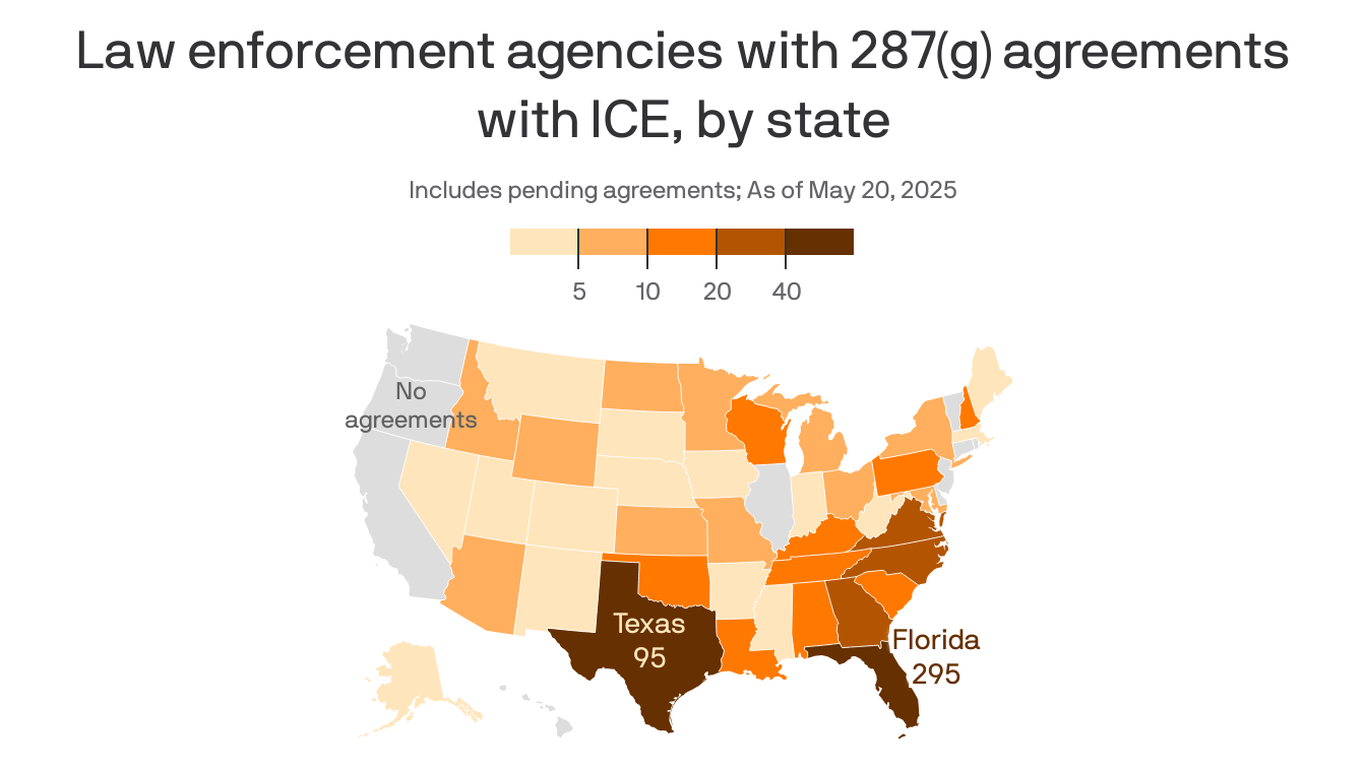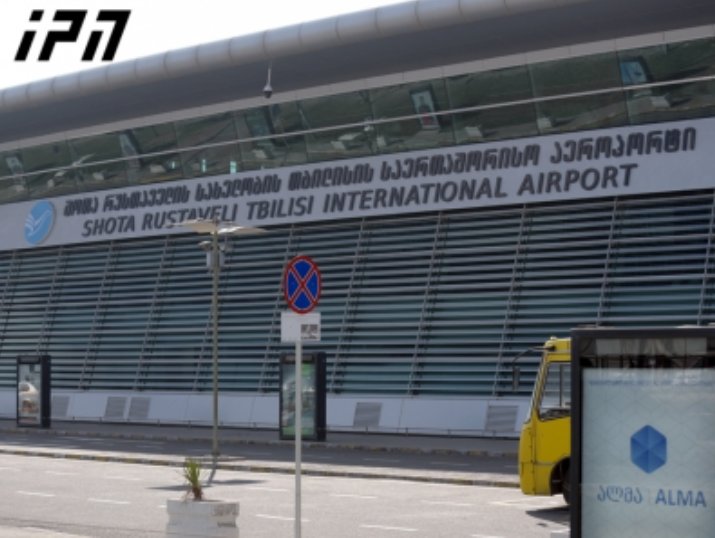- The analysis shows that local law enforcement authorities here and in Texas, Florida, North Carolina and Virginia were most cooperative with immigration and customs authorities (ICE) to build immigrants through deals, which are known as 287 (G) agreements.
- There are 629 such agreements across the country. About 43% of them are in Florida, followed by 14% in Texas and 5% in Georgia.
Zooming: The death of sheets of Riley, a nursing student who was killed by an immigrant without papers in Athens, resolved governor Brian Kemp and the Republican legislator to bring local governments to work with the federal immigration efforts.
- In March, Kemp, Billy Hitchens, Commissioner of the Georgia Department of Public Safety, ICE, headed the 1,100 united officers of the armed forces as part of the 287 (G) program.
- The Senate of Georgia passed laws at the beginning of this year to avoid sovereign immunity for “sanctuary cities” that do not enforce laws of immigration. The draft law is waiting in the State House.
Reality test: Sanctuary Cities – Local Administrations that do not help to enforce the immigration of the federal government have been banned in Georgia since 2009.
Zooming: Federal agents were also particularly active in New York, California and Illinois – blue states in which some local and state laws ban the authorities to help with immigration liability.
According to the numbers: Of the 42,000 immigration parades In March, almost 50% people were in Texas, California, New York, Virginia and Florida. This emerges from an analysis of data from the impartial transaction records Access Clearinghouse (TRAC).
The big picture: The data analyzed by Axios and the locations of the agreements between the federal government and the local authorities reflect some simple truths about the enforcement of immigration in the USA
- There are not nearly enough federal agents In order to reach President Trump's unprecedented deportation destination, a million immigrants per year.
- In some places If the Trump administration is exposed to a resource gap, the local law enforcement authorities are not able or not willing to meet the requirements of the Feds or to expand beyond their usual assertiveness.
- With the limits of the nation The administration essentially locked it in and has relocated a large part of its deportation operations into the interior of the nation.
National Sheriffs' Association The managing director and CEO Jonathan Thompson said that some sheriffs were concerned that their departments could undermine the trust of their communities by working with ICE.
- “I heard that if you want to take someone out of the community, you do it in a way that shows a proper procedure,” he said.
- These arrests cost costs, said Thompson. “It costs the community because [an arrested immigrant] Can be a member … to the fabric of the community. “
Rapid to catch up: The Sheriffs of Metro Atlanta, including Craig D. Owens Sr. von Cobb County and Gwinnetts Keybo Taylor, won their elections, which ended afterwards after taking office 287 (g).
- The result, she said Axios in 2022, made the communities safer; Taylor said he diverted some of the $ 3 million by 287 (G) for combating human trafficking and the violence of gangs.
What you say: Trump Border Czar Tom Homan, a former ICE director, told Axios that he rejected the idea that the cooperation with immigration officers could undermine the trust of the community in local authorities.
- He quotes the government's focus on the arrest of criminals – although many of the people held by ICE did not have any criminal records.
Go deeper







